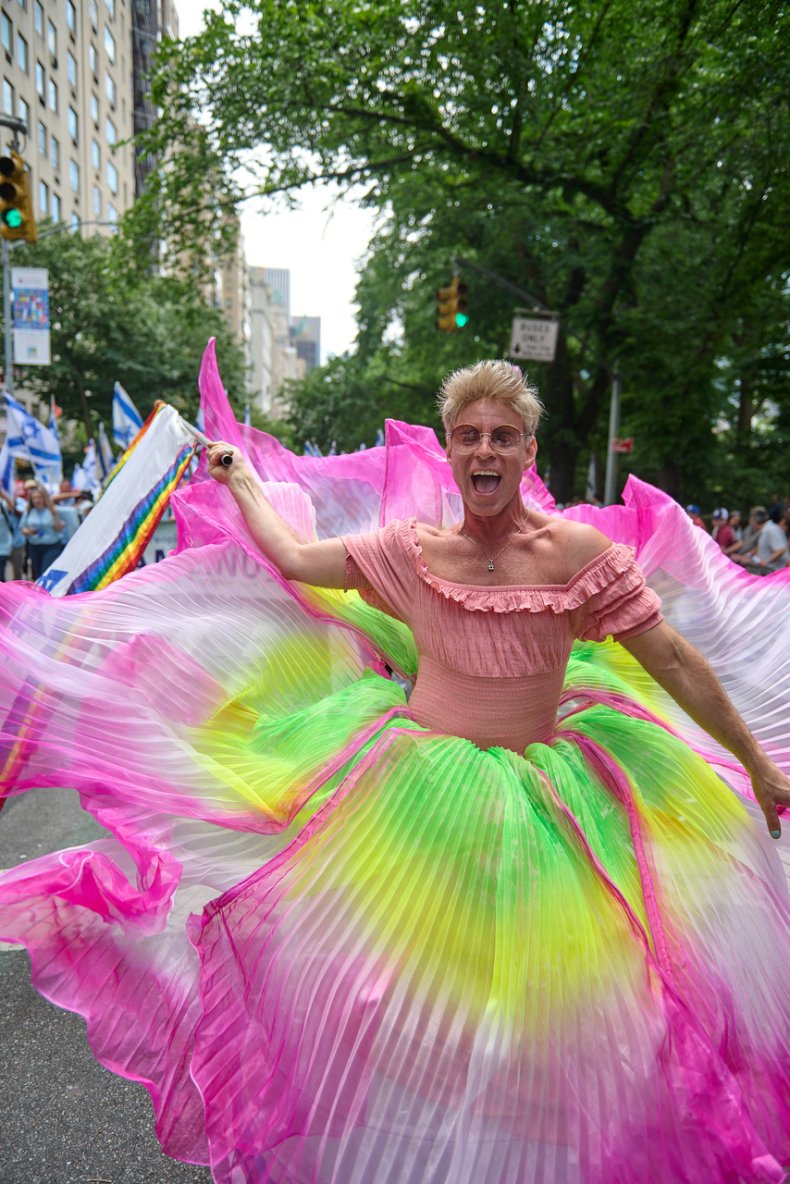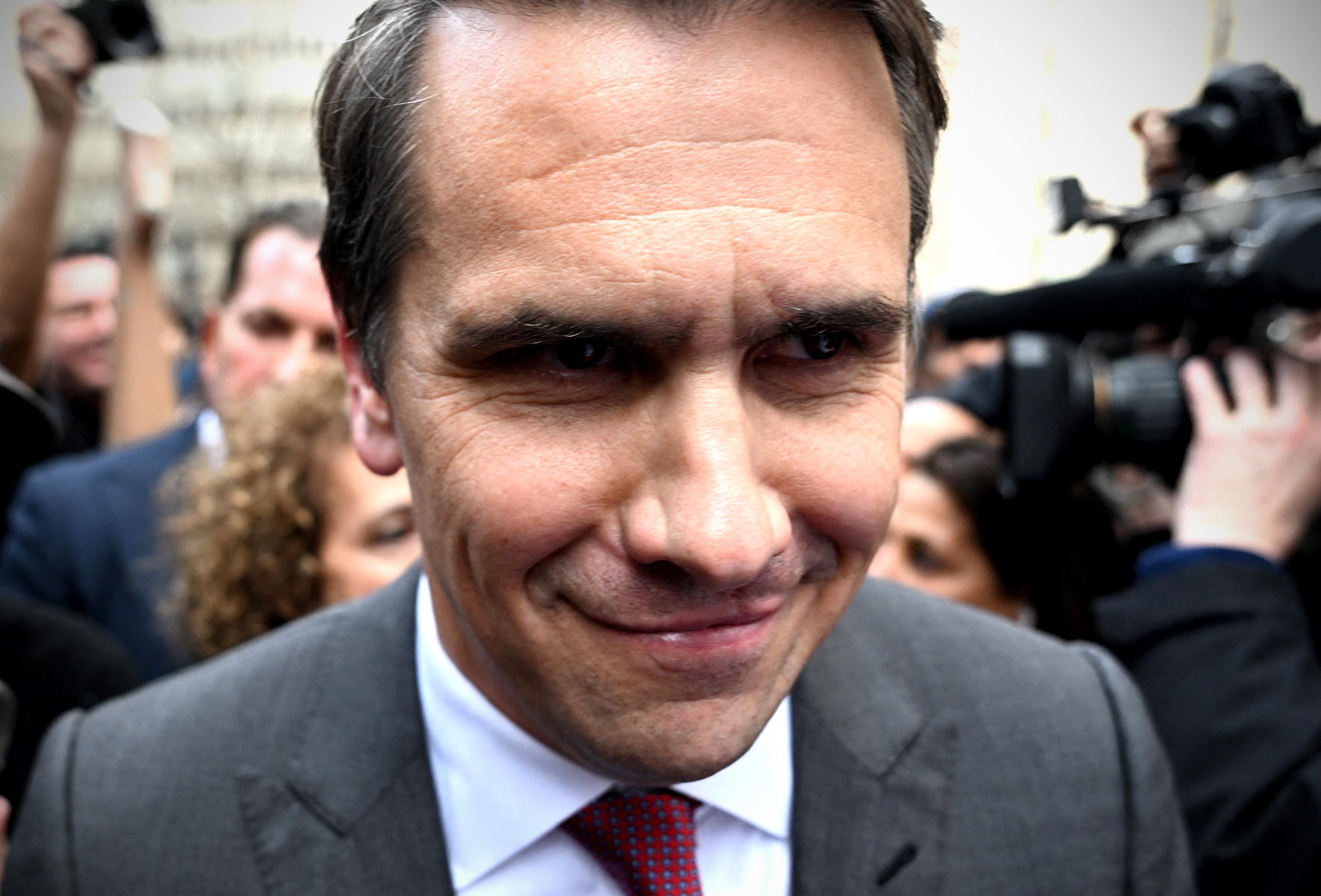I was six years old when I first dressed in drag. It was for the Jewish holiday of Purim, which has a masquerading tradition dating back to ancient Persia. That year, I went as Bugs Bunny, but not just any Bugs Bunny. I was Bugs at his most fabulous, dressed in high drag as the beautiful Valkyrie Brunhilde from the 1957 short "What's Opera, Doc?" With a long blonde pigtailed wig and a crown of golden wings, I transformed into something more than the iconic cartoon. I became Mordechai, a three-foot-nine drag queen. And I was magnificent.
I felt that I had connected to some inner super strength, and I noticed that my drag seemed to make other people very happy. I won first place in my school's costume contest and inspired smiles, laughter and applause in adults and children alike by simply entering a room.
It was clear to me even in the first grade that drag was a powerful tool for joy.
It is a tool I continue to use today as founder and clinical director of JQY, an organization that supports LGBTQ+ youth from religious homes. The freedom, festivity and fearlessness that drag inspires can brighten even the darkest day for a young person dealing with familial rejection, low self esteem, or systemic negative messaging about their identity. Performing in drag for these kids at our holiday parties and parades is incredibly meaningful and a source of great personal pride.
Yet, in the last year alone, there were over 40 proposed bills around the U.S. that threaten to make performing in drag for youth illegal.

The idea behind these laws is that it is inappropriate and dangerous for children to be exposed to drag performances. And like the attempts to ban Rock 'n' Roll in the 1950s, these laws are part of a moral panic around drag fueled by bad arguments, abject falsehoods, and underlying bigotry. It's resulted in an assault on some of our most basic freedoms.
The breadth and diversity of drag make it impossible and ridiculous to profess the entire artform unsuitable for children. Of course, there are some drag acts that are inappropriate for minors—yet there are also vulgar puppet shows, violent animated movies, and sexually explicit slam poetry. You don't hear anyone trying to keep kids from those artforms; instead, there is a reasonable sense that not all puppet shows, animated movies, and slam poetry are for kids. But many are, and the same is true for drag.
In drag, there are wholesome princesses and bawdy broads. The form ranges from family-friendly fun like "Mrs. Doubtfire" and Drag Queen Story Hour to hit TV shows like "RuPaul's Drag Race" and the more adult fare found in late night bars.
People often claim that there is something essentially sexually provocative and sinister about drag. Yet this argument relies heavily on conflating gay identity with sexual practice, leaning on the homophobic fear that queer people use drag to sexually groom and seduce children. Misogyny also plays a role in this thinking. The assumption that drag queens are inherently sexual comes from an inability to divorce the performance of femininity from a presumed solicitation of sex. Needless to say, drag is not a form of erotic seduction or grooming.
Others compare drag to blackface, claiming it is a mockery of women and encourages a disrespectful appropriation of womanhood by men. This might be a more compelling argument if, like the popularity of blackface among racists, the tactic was more widely used by those trying to disempower women. But you'd be hard pressed to find a more progressive population than men who perform drag.
In truth, we are celebrating women and exaggerating our own femininity that lives within. Drag utilizes one's own traits, heightening them for performance purposes. The feminine persona created may manifest as an impersonation, but it is rooted in one's own authenticity.
Some want to keep drag away from children because they worry drag aims to confuse and destroy gender roles. And yet, drag is actually a reminder that one doesn't have to change their gender to express masculinity or femininity. I never thought that Bugs had to be a girl just because he was in a wig and dress. In cases where boys want to express femininity and girls want to express masculinity, drag builds resilience around one's gender and prevents crises of identity. One would think that this would be compelling to those on the Right!
Worst of all, these anti-drag laws simply can't be enforced. After all, what constitutes drag? How much femininity can a man express before he is considered a drag queen? Would wearing a dress do it? How about a blouse? What about something pink? Who decides?
These regressive laws contribute to a legislative reality where feelings trump facts. If they hold, the government would have seemingly unlimited power to dictate what clothes we put on our bodies. It would for all intents and purposes be a masc mandate!
Fans of freedom should be fans of drag, for drag is, at its core, a celebration of freedom. The idea that children must be protected from drag is just the latest moral panic, and these bills will age badly. The right side of history is clear. Drag will live on, and we are all better for it... including the kids.
Mordechai Levovitz is the founder and clinical director of JQY (Jewish Queer Youth), an organization that supports and empowers LGBTQ+ youth and teens from Orthodox, Hasidic and Sephardi-Mizrachi homes. If you need support, visit the JQY website (http://jqy.org/) or call/text the JQY warmline at (551) JQY-HOPE (551) 579-4673.
The views expressed in this article are the writer's own.








